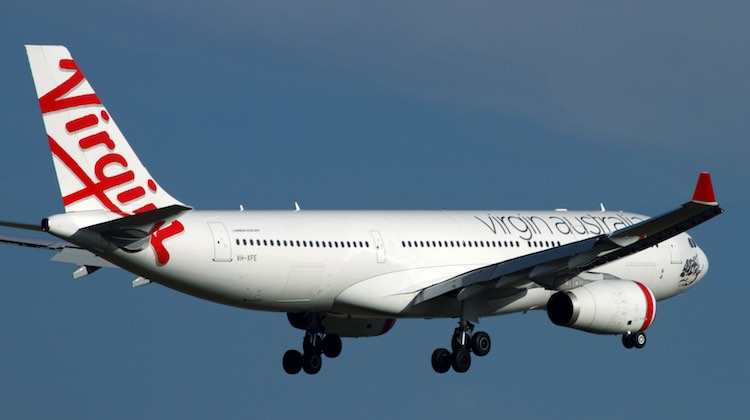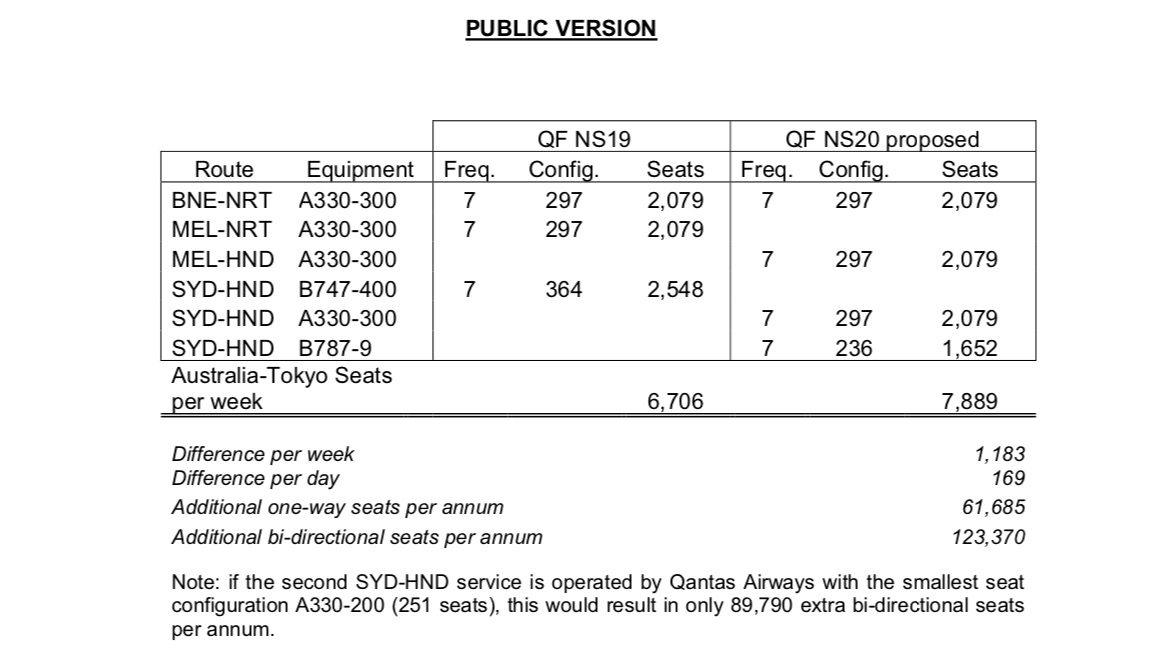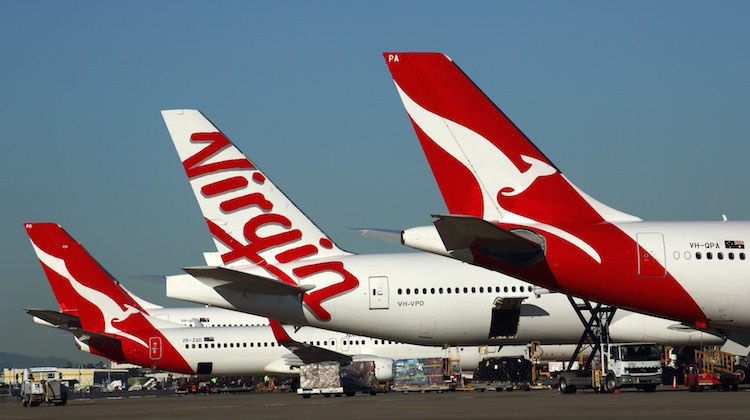
Virgin Australia is seeking one of the new slots available to Tokyo Haneda airport to launch nonstop flights from Brisbane.
The airline’s application to the International Air Services Commission (IASC) says the new Brisbane-Tokyo Haneda service would be operated by Airbus A330-200 equipment and flown in partnership with Japanese carrier All Nippon Airways (ANA).
“The Japan market represents an excellent strategic fit for Virgin Australia, as a destination with a strong growth outlook for both inbound and outbound travel, and which appeals to our leisure and corporate customers alike,” Virgin Australia said in its submission posted on the IASC website on Wednesday.
Earlier in September, the Japanese Ministry of Land, Infrastructure, Transport and Tourism (MLIT) allocated a total of four new slot pairs for Australia-Tokyo Haneda routes, comprising two new slot pairs for Japanese carriers – one for All Nippon Airways (ANA) and one for Japan Airlines – and two new slot pairs for Australian carriers.
The allocation was among a package of 50 slot pairs for international services at Tokyo Haneda, with 25 for Japanese airlines and 25 for international carriers.
Also, the slots would be for daytime services – notionally between 0600 and 2255 – as air traffic managers opened up more airspace in the Tokyo area to support the additional flights.
The IASC, which manages Australia’s international traffic rights, said on September 3 it was aiming to allocate the two Tokyo Haneda slots by October 31 2019, in order to enable Australian carriers to begin flights from March 29 2020, the start of the 2020 northern summer scheduling period. It described the deadline as a “tight timeframe”.
“The new capacity to Haneda provides an excellent opportunity for a new entrant to successfully break into the market and establish a strong position for itself, given the advantages that Haneda enjoys over Narita in terms of convenience and proximity to the Tokyo central business district,” the Virgin Australia submission said.
“An allocation of capacity to Virgin Australia will therefore enable us not just to compete with the Qantas Group and Japan Airlines, but to effectively compete.”

Partnership with ANA
Tokyo Haneda Airport had previously been predominantly used by Japanese carriers as a domestic airport. However, there have been efforts to expand the number of international services at Haneda amid a Japanese government push to attract more tourists to the country.
In addition to being much closer to central Tokyo compared with Narita’s location on the eastern side of the city, Haneda also offers a host of potential connections to other destinations in Japan.
Virgin Australia said in its submission its partnership with ANA would include reciprocal code share services on nonstop Australia-Japan routes, as well as on flights within the two carrier’s domestic networks, which would provide a “critical source of passenger feed onto the new flights”.
There would also be reciprocal loyalty benefits for members of Virgin Australia’s Velocity and ANA’s Mileage Club frequent flyer programs, including access to priority checkin, baggage and boarding along with lounge access for eligible members.
“This partnership is an essential element of our strategy to establish a strong position in the Japan market in the future and a key point of difference relative to the proposal by the Qantas Group,” Virgin Australia said in its submission.
The submission noted ANA offered 38 domestic code share connections out of Tokyo Haneda, compared with five at Tokyo Narita.
“Virgin Australia would not be prepared to commence services to Japan if our only option to serve Tokyo was through operations to Narita, as we would not have the ability to leverage our partnership with ANA,” Virgin Australia said.
While Virgin Australia currently does not fly to Japan with its own aircraft, it sells codeshares flights between Australia and five destinations in Japan operated by its alliance partner Singapore Airlines (SIA).

Qantas seeking both slots
While Virgin Australia was seeking one slot, its rival Qantas lodged an application to the IASC for both slots, to be used for a second daily Sydney-Haneda flight and to switch its Melbourne-Tokyo Narita service to Haneda.
Qantas said in the submission to the IASC its plans to add flights to Tokyo Haneda did not deny competition from other Australian carriers, noting there was unrestricted capacity for operating into Tokyo Narita and other points in Japan under the current air services agreement between the two countries.
Further, the Flying Kangaroo said it was the “only no risk option” to meet the requirement for the two Tokyo Haneda slots to be utilised from March 29 2020.
Virgin Australia said it was well-placed to begin flights at the start of the northern summer 2020 scheduling season on March 29 2020, having completed an operational feasibility assessment in May 2019 and already held a Permission Certificate/business licence from the Japanese Minister of Land, Infrastructure, Transport and Tourism.
“Any suggestion that Virgin Australia will not be able to launch flights on 29 March 2020, or lacks the commercial capability to set up our services for success in the future, is mere conjecture,” ,” the Virgin Australia submission said.
“Commencing operations to Haneda is a top priority for our business and the project is being delivered in accordance with strict timeframes under the stewardship of a robust governance structure.”
Virgin Australia said in its submission the greatest public benefits was “likely to be realised by splitting the available capacity between itself and Qantas.
“Such an outcome would facilitate increased competition, choice and more capacity than if both daily frequencies were allocated to the Qantas Group as it has requested.”
“It is difficult to understand how an allocation of all the new capacity to Haneda to the Qantas Group, in addition to the one slot to Haneda that it currently holds, would be capable of fostering an environment in which Virgin Australia or any other Australian international carrier would be able to compete effectively on the route in the future.”
Figures in the the Virgin Australia submission showed allocating one slot to Virgin Australia would add between 77,380 and 110,960 more seats on Australia-Japan routes than if both slots were allocated to Qantas.

Virgin Australia’s current international network covered 15 destinations split between short-haul routes to New Zealand, the nations of the South Pacific and Denpasar in Indonesia, and long-haul flights to Hong Kong and Los Angeles.
Its widebody fleet sits at 11 aircraft – five Boeing 777-300ERs that are used on flights to Los Angeles from Brisbane, Melbourne and Sydney, as well as six Airbus A330-200s that operate to Hong Kong from Melbourne and Sydney, between Sydney and Nadi, and on nonstop services from Perth to Australia’s east coast capitals.
Currently, there were nine nonstop routes between Australia and Japan operated by four carriers – Sydney-Tokyo Haneda (ANA and Qantas), Sydney-Tokyo Narita (Japan Airlines), Sydney-Osaka Kansai (Qantas), Melbourne-Tokyo Narita (Japan Airlines and Qantas), Brisbane-Tokyo Narita (Qantas), Gold Coast-Tokyo Narita (Jetstar), Cairns-Osaka Kansai (Jetstar), Cairns-Tokyo Narita (Jetstar) and the recently commenced Perth-Tokyo Narita service from ANA.
And there is new capacity coming later in 2019, with Qantas scheduled to operate a seasonal Sydney-Sapporo nonstop flight with Airbus A330 equipment between December 2019 and March 2020.











